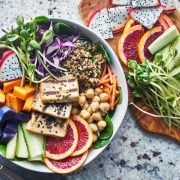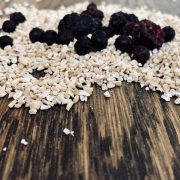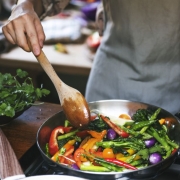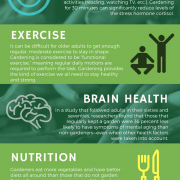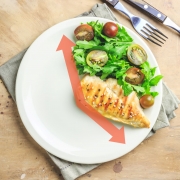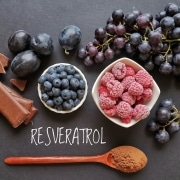Healthy Meal Prep Ideas: Simplify Your Week and Eat Healthier!
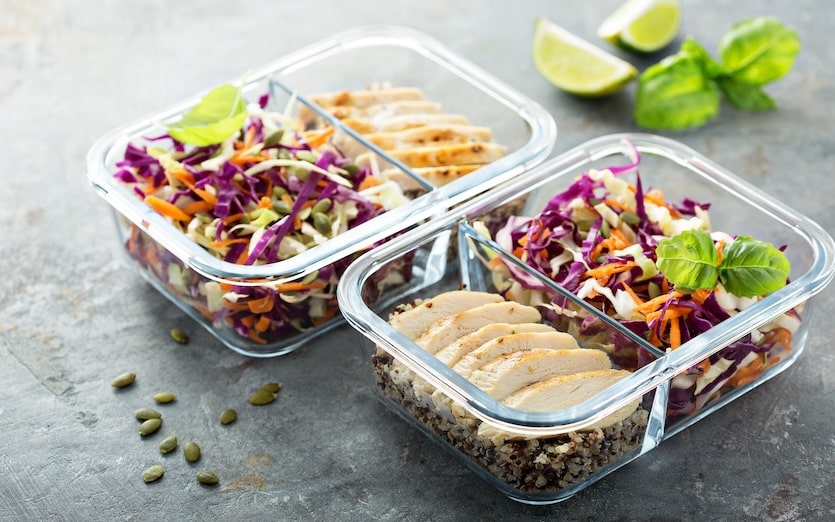
In the hustle and hurry of today’s world, meal prep is all the rage. Hundreds, if not thousands, of articles, blog posts, and videos exist on the subject. Social media is full of meal-prep recipes, tips, tricks, and more. When confronted with all of this content, it’s easy to feel overwhelmed. That’s where this article comes in.
If you’re brand new to meal-prep, don’t worry—we’ll break the process down into digestible pieces, giving you the confidence and know-how to approach meal-prep like a seasoned pro (pun intended).
Meal Prepping vs. Meal Planning: What’s the Difference?
Before diving into the dos and don’ts of meal-prep, let’s get one thing out of the way: meal-prepping and meal planning are two distinct practices.
Meal planning refers to the process of plotting out your meals for a week, month, or some other period of time. Basically, you are deciding what to eat ahead of time and shopping accordingly. Think of a meal plan as a kitchen calendar: it tells you what you are going to make and when. And that’s it—there’s no chopping, simmering, or cooking involved in meal planning.
Meal prep, on the other hand, actually involves some prep work. (It’s in the name, after all.) In a kitchen setting, prep work refers to any tasks that can be completed before cooking and assembling a final dish or meal. This can be something as simple as chopping an onion or as complex as simmering and seasoning a sauce.
The goal of prep work in a professional kitchen is to cut down on the time it takes to actually cook a dish from start to finish. The same is true of meal-prep in your own house. When you meal-prep, you execute some of the steps involved in preparing a dish ahead of time. In practice, this can look a variety of ways—but more on that in the next section.
Meal prep and meal planning go hand-in-hand. In order to get started on meal-prep for the week, you need to know what you’re going to eat each day—and that requires meal-planning.
Types of Meal-prep
Meal-prep looks a little bit different for everyone, but most people follow one of three systems:
- Prepping ingredients: Much of the time and labor involved in preparing a meal is spent on peeling, chopping, dicing, etc. Think about the last meal you cooked that called for a lot of garlic—peeling and dicing each individual clove can take a while. If your time in the evenings is limited, prepping ingredients beforehand can allow you to cook fresh meals each day without spending as much time in the kitchen. This meal-prep strategy is also great for lunches. After all, who wants to cut a bunch of bell peppers first thing in the morning?
- Batch cooking: Some foods store better than others. People who batch cook as part of their meal-prep lean into this fact, cooking large portions of certain recipes all at once and saving them for later use. Often this means freezing fifteen portions of a soup or cooking enough rice for the week on Sunday and keeping it in the fridge for use throughout the week.
- Individually portioning meals: If you choose this method, you’ll be doing the prep, portioning, and assembling of a meal beforehand. Basically, you’ll be prepping a week’s worth of food, then dividing it out into separate containers for each day. When you’re finished, you’ll have a grab-and-go lunch or ready-made dinner for each day of the week. This method requires a little more preparation but saves you the most time throughout the week.
How to Meal-prep
Now that we’ve covered what meal prepping is, you probably have one question left: how can I get started?
First, you’ll need to make a meal plan. Look at your calendar and decide how many prepped meals you need for each day. There’s no right number—it’s going to depend entirely on your own needs. Next, decide what meals you want to eat each day. To simplify the planning and prepping process, try to include some overlap. For example, plan to eat the same meal for lunch at least two or three days a week.
As you plan your meals, it can be helpful to think in terms of nutritional building blocks. This may sound complicated, but it’s quite straightforward: each meal could contain a grain (quinoa, for instance), a protein (grilled chicken breast is a popular option), and fruits and vegetables. These building blocks provide a solid foundation for each meal but can be customized for variety. For example, you might prepare enough brown rice, chicken, and salad for the week, but change the final dish each day. On Monday, lunch might be chicken breast over rice with a salad on the side. Tuesday, you could use a curry sauce to transform those same ingredients into a chicken curry bowl. Wednesday, you could shred the chicken and put it in a wrap, along with the rice, and the salad. Rinse and repeat for the rest of the week.
The amount of prep work you perform beforehand depends on the meal-prep method that you choose to use. If your recipes are fairly simple, preparing the ingredients might be all you need to do. Individually portioned meals, on the other hand, will require more prep ahead of time.
Most people choose to do all of their meal prep on the same day—typically a Saturday or Sunday—but there’s no hard-and-fast rule. To get started with meal-prep, simply choose a day when you can set aside a couple of hours to prepare food. Remember to use all the appropriate food safety practices. Select a recipe (or a few recipes), gather the ingredients, and get prepping!
Meal-prep Tips and Tricks
At the end of the day, your meal-prep process is going to be unique to your schedule and your needs. And while it will inevitably take a bit of trial and error to figure your system out, here are a few tips and tricks to help you kickstart the process:
- Start with simple recipes: Meal-prep strategies can be applied to virtually any recipe, but in practice you may find it easiest (and most helpful) to stick to simple recipes. The whole point of meal-prep is to reduce the amount of time and stress it takes to prepare healthy meals throughout the week—the more moving parts a recipe has, the more time it will take you to prep and assemble. Simple recipes with only a few ingredients are typically optimal candidates for meal-prep.
- Don’t cheap out on the containers: A key element of meal-prep is preparing food—whether it’s a final meal or just ingredients—before they will be eaten. This means that your meals and ingredients will be spending anywhere from a day or two to a whole week in the fridge. During this time, you’ll want to keep your food as fresh as possible—and that means investing in some high-quality airtight containers.
- Choose ingredients that will keep: High-quality containers only go so far. At the end of the day, some foods simply spoil faster than others. As you select recipes to meal-prep, be mindful of the ingredients you are using. If something will spoil in a matter of days, plan accordingly.
- Don’t forget your freezer: When it comes to preserving ingredients or even prepared meals, the freezer is your friend. Many foods that will spoil after a week in the fridge can be kept for months in the freezer. Soups and sauces are often excellent candidates for freezing but do your research to see what you can keep in the freezer—and for how long!
- Collect a few sauce recipes: Simple food doesn’t have to be bland or boring. Although food-prep recipes are often basic, they can be easily elevated with a good sauce. Additionally, sauces are a great way to add some variety to otherwise repetitive meals. If you’re just getting started with meal-prep, a few good sauce recipes can be a gamechanger.




